After a thorough process including written submissions, video presentations and pitching to panels of judges with a variety of business backgrounds, the following companies and projects were selected as the first recipients of MIF packages. Congratulations to these teams and thank you to the selection committees for your time and effort! Check this space often for more information about each team, as well as updates on their progress through the Support Program.
Blastoff
Recipients in this category receive $100,000 for projects which have started commercialization and have the potential to go further.
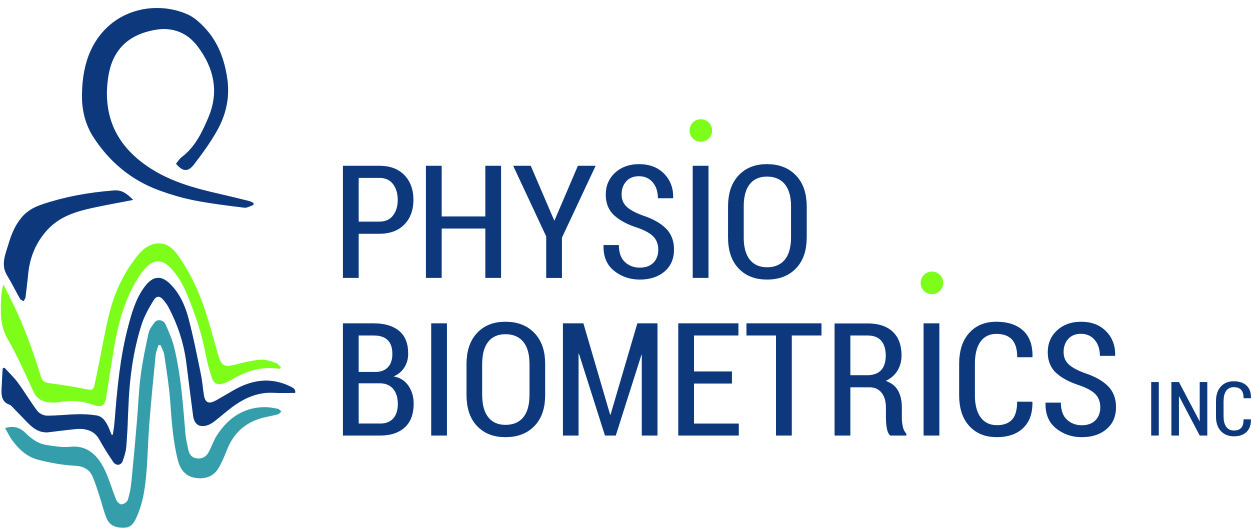 PhysioBiometrics Inc. is a MedTech company dedicated to developing accessible technologies to help people with movement and posture vulnerabilities to move better to move more. Every person at one point in their lifetime will experience change or deterioration in capacity to move owing to illness, accident, injury, or aging. There is no country that can meet the needs of their population in terms of services to prevent and rehabilitate the sequelae of accidents, injuries, illness and aging. Technology is poised to fill this gap and our company is poised to provide simple and accessible technologies targeting movement quality to enable people to move more. Our premier product targets walking, the most valued activity contributing to quality of life. The Heel2ToeTM sensor (Class I Medical Device) automates a strategy that physiotherapists use to improve the quality of a person’s gait, giving verbal instruction and feedback to place the heel first when walking. This simple “heel first” strategy changes a stooped, shuffling walking pattern to one that is upright and striding. The positive auditory feedback provided in real time while the person is walking is known to stimulate neural connections and, through neuroplasticity, stamps in a more optimal and repeatable walking pattern. We have published evidence of efficacy potential and results of a randomized trial will be published shortly. The sensor combined with supporting educational products in our Walk-BESTTM line (BEtter, Faster, Longer, STronger) will make self-management of walking challenges a reality and support remote monitoring and rehabilitation of gait related impairments by therapists. For details see www.physiobiometrics.com
PhysioBiometrics Inc. is a MedTech company dedicated to developing accessible technologies to help people with movement and posture vulnerabilities to move better to move more. Every person at one point in their lifetime will experience change or deterioration in capacity to move owing to illness, accident, injury, or aging. There is no country that can meet the needs of their population in terms of services to prevent and rehabilitate the sequelae of accidents, injuries, illness and aging. Technology is poised to fill this gap and our company is poised to provide simple and accessible technologies targeting movement quality to enable people to move more. Our premier product targets walking, the most valued activity contributing to quality of life. The Heel2ToeTM sensor (Class I Medical Device) automates a strategy that physiotherapists use to improve the quality of a person’s gait, giving verbal instruction and feedback to place the heel first when walking. This simple “heel first” strategy changes a stooped, shuffling walking pattern to one that is upright and striding. The positive auditory feedback provided in real time while the person is walking is known to stimulate neural connections and, through neuroplasticity, stamps in a more optimal and repeatable walking pattern. We have published evidence of efficacy potential and results of a randomized trial will be published shortly. The sensor combined with supporting educational products in our Walk-BESTTM line (BEtter, Faster, Longer, STronger) will make self-management of walking challenges a reality and support remote monitoring and rehabilitation of gait related impairments by therapists. For details see www.physiobiometrics.com
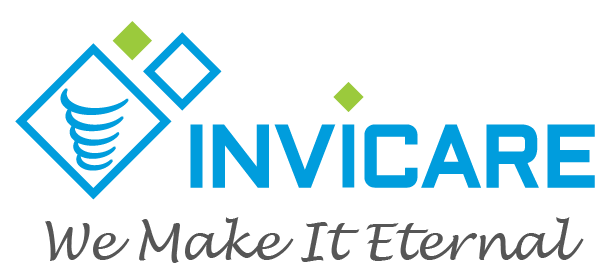 INViCARE develops an innovative biomedical technology to address infections around implants, with a two-fold approach to include prevention and more effective treatment. The company's core technology is a proprietary two-dimensional nanocrystalline hydrogel; the outcome of seven years of collaborative research between McGill scientists and researchers from Harvard Medical School and the University of Montreal. The innovative technology is now patented in the US and is also registered for the national patent phase in Canada and European Union (PCT / CA2016 / 051415). It has a range of commercial applications, including but not limited to cleaning dental implants, implant coating, bone regeneration and healing, and gel-based drug delivery, and the company is ready to go-to-market with a product line of dental implant cleaning gels, initially with NeoPhylaxis by 2022 followed by ImplanTreat in 2024, with the implant dental care market serving as the beachhead. This project focuses on implementing a successful Commercialization strategy, based on a market adoption clinical study that will generate factual data to create and sustain sales momentum. INViCARE is in the seed stage of growth and raising funds for new patents, regulatory approval, manufacturing process, market support, and sales to begin in 2022. For details, see www.invicare.ca
INViCARE develops an innovative biomedical technology to address infections around implants, with a two-fold approach to include prevention and more effective treatment. The company's core technology is a proprietary two-dimensional nanocrystalline hydrogel; the outcome of seven years of collaborative research between McGill scientists and researchers from Harvard Medical School and the University of Montreal. The innovative technology is now patented in the US and is also registered for the national patent phase in Canada and European Union (PCT / CA2016 / 051415). It has a range of commercial applications, including but not limited to cleaning dental implants, implant coating, bone regeneration and healing, and gel-based drug delivery, and the company is ready to go-to-market with a product line of dental implant cleaning gels, initially with NeoPhylaxis by 2022 followed by ImplanTreat in 2024, with the implant dental care market serving as the beachhead. This project focuses on implementing a successful Commercialization strategy, based on a market adoption clinical study that will generate factual data to create and sustain sales momentum. INViCARE is in the seed stage of growth and raising funds for new patents, regulatory approval, manufacturing process, market support, and sales to begin in 2022. For details, see www.invicare.ca
Launchpad
Recipients in this category receive $50,000 for projects which have gone beyond the proof of concept and demonstrate an ability to implement their solution.
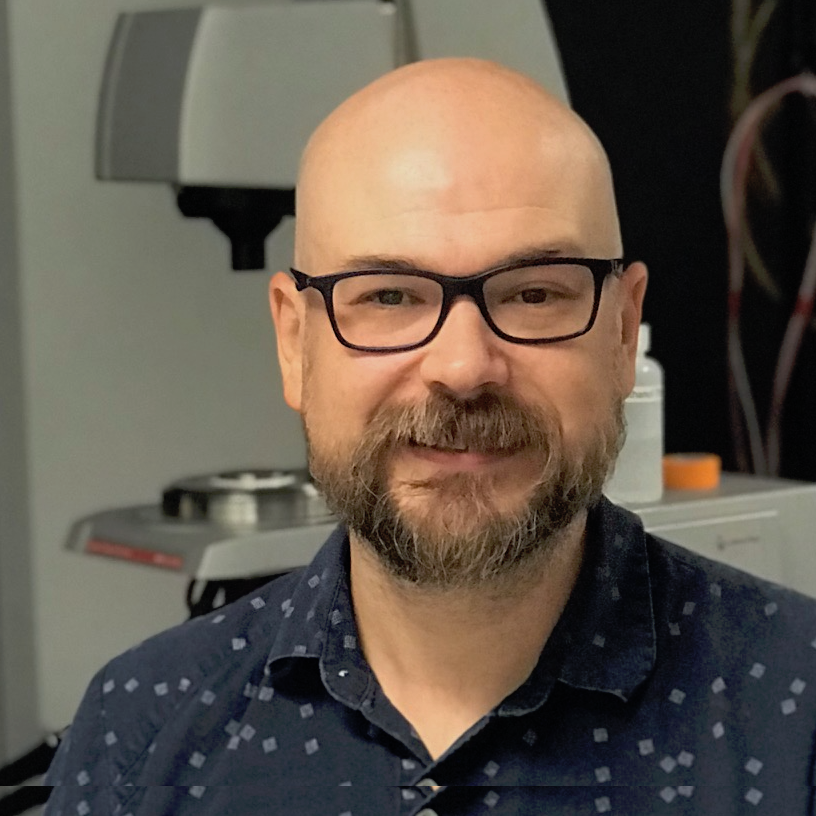 Pattern based Contractile Screening (PaCS) led by Professor Allen Ehrlicher. Cells are not only biochemical entities, but exert significant contractile forces. Defects in these forces are associated with a broad range of pathologies, from cancer and heart disease to asthma. Nevertheles, in a doctor’s office, or even extensive hospital investigation, the only force measurement commonly performed is a blood pressure measurement. While blood pressure is certainly a critical measure of health, cell contractility is also an important metric in biomedical and clinical diagnostics. Nevertheless, contractile forces remain unutilized despite their transformative value due to their complexity of implementation. PaCS addresses this shortcoming by measuring elastic substrate pattern deformation, to offer a dramatically simpler, faster, and higher-content approach for contractility quantification. This represents the first industrial translation of cell forces methodologies to a practical and readily implementable approach.
Pattern based Contractile Screening (PaCS) led by Professor Allen Ehrlicher. Cells are not only biochemical entities, but exert significant contractile forces. Defects in these forces are associated with a broad range of pathologies, from cancer and heart disease to asthma. Nevertheles, in a doctor’s office, or even extensive hospital investigation, the only force measurement commonly performed is a blood pressure measurement. While blood pressure is certainly a critical measure of health, cell contractility is also an important metric in biomedical and clinical diagnostics. Nevertheless, contractile forces remain unutilized despite their transformative value due to their complexity of implementation. PaCS addresses this shortcoming by measuring elastic substrate pattern deformation, to offer a dramatically simpler, faster, and higher-content approach for contractility quantification. This represents the first industrial translation of cell forces methodologies to a practical and readily implementable approach.
 BioOptic device, led by Professor Mark Driscoll. BioOpticTM is a novel device of the Musculoskeletal Biomechanics Research Lab at McGill that is accurate and non-invasive. The technology seeks to offer a quick and easy way to measure one’s intra-abdominal pressure (IAP) which is shown to influence spinal stability and hence linked to back pain. Specifically, the device design and methods employed will be refined towards improving the accuracy, reliability, and usability of the device to get fully ready for market.
BioOptic device, led by Professor Mark Driscoll. BioOpticTM is a novel device of the Musculoskeletal Biomechanics Research Lab at McGill that is accurate and non-invasive. The technology seeks to offer a quick and easy way to measure one’s intra-abdominal pressure (IAP) which is shown to influence spinal stability and hence linked to back pain. Specifically, the device design and methods employed will be refined towards improving the accuracy, reliability, and usability of the device to get fully ready for market.
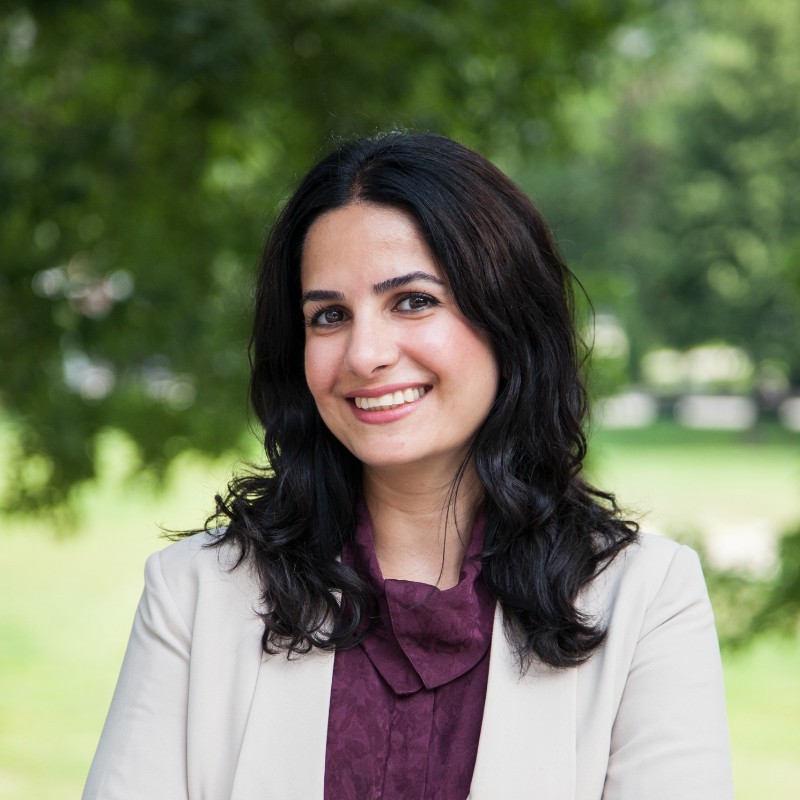 Salivera, led by Professor Sara Mahshid. The project is targeted for molecular diagnosis of respiratory infections like COVID-19 and Influenza A/B via colorimetric detection of RNA in the saliva of the patients in a multiplex and automated fashion. The team's vision is to maintain the accuracy of the gold standard (PCR), while reducing the cost (15$ customer price), time (5 min turn around) and complexity (fully automated sample collection, preparation and detection).
Salivera, led by Professor Sara Mahshid. The project is targeted for molecular diagnosis of respiratory infections like COVID-19 and Influenza A/B via colorimetric detection of RNA in the saliva of the patients in a multiplex and automated fashion. The team's vision is to maintain the accuracy of the gold standard (PCR), while reducing the cost (15$ customer price), time (5 min turn around) and complexity (fully automated sample collection, preparation and detection).
 Polyglycerol dendrimer-based coating, led by Professor Timothy Kennedy. The project focuses on a new highly stable polymer coating for use as a cell culture substrate, which substantially enhances the capacity to support long-term cell cultures for biotechnological applications. A major challenge for long-term cell culture is that specialized proteins used to coat the cell culture substrate are susceptible to degradation by proteases secreted by the cells. This destabilizes the culture, and typically results in cell death. Our new coating provides game-changing support for long-term cultures, in particular for cells derived from human induced pluripotent stem cells (hiPSCs). The coating is composed of dendrimeric polyglycerol amine (dPGA). The team has demonstrated the improved health and long-term stability of cells cultured on this new coating. dPGA nanoparticles are inexpensive to produce, highly stable, simple to use, and easily adapted to existing protocols for cell culture.
Polyglycerol dendrimer-based coating, led by Professor Timothy Kennedy. The project focuses on a new highly stable polymer coating for use as a cell culture substrate, which substantially enhances the capacity to support long-term cell cultures for biotechnological applications. A major challenge for long-term cell culture is that specialized proteins used to coat the cell culture substrate are susceptible to degradation by proteases secreted by the cells. This destabilizes the culture, and typically results in cell death. Our new coating provides game-changing support for long-term cultures, in particular for cells derived from human induced pluripotent stem cells (hiPSCs). The coating is composed of dendrimeric polyglycerol amine (dPGA). The team has demonstrated the improved health and long-term stability of cells cultured on this new coating. dPGA nanoparticles are inexpensive to produce, highly stable, simple to use, and easily adapted to existing protocols for cell culture.
Prelaunch
Recipients in this category receive $25,000 for projects which have demonstrated a proof of concept in a controlled or laboratory setting.
 HisTurn, led by Dr. Sarah Kimmins. Despite infertility in couples being attributed in up to 50% of cases to male factor, the analysis of male fertility parameters is inadequate and there are few treatments for infertility in men. Current semen analysis is outdated and based on a 50 yr old assessment method (number, motility, morphology), that is of limited clinical value as it frequently fails to detect male infertility. There is an urgent need to treat fertility and infertility diagnosis in men given that sperm counts have declined at an alarming rate in the last 40 yrs. To meet this need the team is developing a fertility diagnostic, HisTurn, based on sperm epigenome signatures that associate with fertility status, lifestyle and clinical outcomes. The sperm epigenome is a heritable layer of biochemical information that controls gene expression (which genes are on or off), during the formation of sperm and is also transmitted at fertilization to control gene expression and development in embryos. If there are errors in the epigenome induced by environmental factors (diet, BMI, toxicant exposure, cannabis use), this can impact sperm quality and function (e.g. fertilizing ability), as well as embryo quality and pregnancy rates. Clinical adoption of HisTurn will fill a technology and health needs gap by accurately diagnosing infertility in men and providing clinicians with actionable information to allow them to streamline fertility treatment pathways. The team aims to make the clinical journey for couples inclusive of men and to increase the births of healthy children.
HisTurn, led by Dr. Sarah Kimmins. Despite infertility in couples being attributed in up to 50% of cases to male factor, the analysis of male fertility parameters is inadequate and there are few treatments for infertility in men. Current semen analysis is outdated and based on a 50 yr old assessment method (number, motility, morphology), that is of limited clinical value as it frequently fails to detect male infertility. There is an urgent need to treat fertility and infertility diagnosis in men given that sperm counts have declined at an alarming rate in the last 40 yrs. To meet this need the team is developing a fertility diagnostic, HisTurn, based on sperm epigenome signatures that associate with fertility status, lifestyle and clinical outcomes. The sperm epigenome is a heritable layer of biochemical information that controls gene expression (which genes are on or off), during the formation of sperm and is also transmitted at fertilization to control gene expression and development in embryos. If there are errors in the epigenome induced by environmental factors (diet, BMI, toxicant exposure, cannabis use), this can impact sperm quality and function (e.g. fertilizing ability), as well as embryo quality and pregnancy rates. Clinical adoption of HisTurn will fill a technology and health needs gap by accurately diagnosing infertility in men and providing clinicians with actionable information to allow them to streamline fertility treatment pathways. The team aims to make the clinical journey for couples inclusive of men and to increase the births of healthy children.
 ‘Multimeter’ of the nano-age, led by Professor Changhong Cao. The project aims to develop user-friendly and cost-effective monolithic micro-electromechanical systems (MEMS) to accelerate the transfer of ultra-thin films-based applications to the marketplace by enabling their quantitative characterizations. As silicon-based innovations have almost reached their physical limitations, the class of ultra-thin films is one of the most promising alternative building blocks for next-generation electronics to support a range of disruptive technologies including augmented reality (AR), autonomous vehicles (AV) and Internet of Things (IoT). The market size of 2DM-based devices is projected to reach $203 billion in 2028. While exotic lab-scale 2DM devices have been demonstrated with unprecedented performance, a critical step before they can be transferred to the marketplace is to assure their properties meet industrial standards and sustainable. However, it is much more challenging to evaluate the physical properties of 2DM-based devices because of their ultra-thin and delicate nature. The minimum viable product developed has been demonstrated for mechanical characterizations of ultrathin films and enabled the first discovery of the fracture toughness of functionalized graphene. With a growing demand for such characterization systems, the team is currently commercializing it by making it more user-friendly and cost-effective, and developing new systems to allow for on-demand characterizations of multi-physics properties of ultra-thin films with the goal of building a ‘multi-meter’ for ultra-thin materials-based devices/structures.
‘Multimeter’ of the nano-age, led by Professor Changhong Cao. The project aims to develop user-friendly and cost-effective monolithic micro-electromechanical systems (MEMS) to accelerate the transfer of ultra-thin films-based applications to the marketplace by enabling their quantitative characterizations. As silicon-based innovations have almost reached their physical limitations, the class of ultra-thin films is one of the most promising alternative building blocks for next-generation electronics to support a range of disruptive technologies including augmented reality (AR), autonomous vehicles (AV) and Internet of Things (IoT). The market size of 2DM-based devices is projected to reach $203 billion in 2028. While exotic lab-scale 2DM devices have been demonstrated with unprecedented performance, a critical step before they can be transferred to the marketplace is to assure their properties meet industrial standards and sustainable. However, it is much more challenging to evaluate the physical properties of 2DM-based devices because of their ultra-thin and delicate nature. The minimum viable product developed has been demonstrated for mechanical characterizations of ultrathin films and enabled the first discovery of the fracture toughness of functionalized graphene. With a growing demand for such characterization systems, the team is currently commercializing it by making it more user-friendly and cost-effective, and developing new systems to allow for on-demand characterizations of multi-physics properties of ultra-thin films with the goal of building a ‘multi-meter’ for ultra-thin materials-based devices/structures.
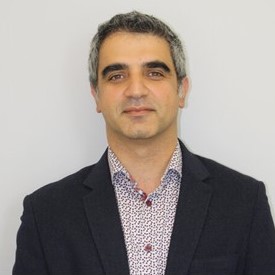 Identification of an Ion Channel Target, led by Professor Reza Sharif Naeini, Department of Physiology. The project is a promising approach to develop new therapies in the treatment of pain for Osteo- and Rheumatoid-Arthritis. Activation of peripheral pain sensing neurons (nociceptors) is central to the experience of pain, and several chronic pain conditions are caused by the sensitization of nociceptors to mechanical stimuli, including osteoarthritis and rheumatoid arthritis pain. TACAN (TMEM120A), a six-transmembrane ion channel expressed in nociceptors and involved in sensing mechanical pain, has been identified and represents a potential therapeutic target in chronic inflammatory pain. Identifying a small molecule inhibitor that would specifically target this ion channel would prevent the initiation of the pain signal and may have valuable therapeutic potential in OA and RA patients, as well as other inflammatory pain conditions.
Identification of an Ion Channel Target, led by Professor Reza Sharif Naeini, Department of Physiology. The project is a promising approach to develop new therapies in the treatment of pain for Osteo- and Rheumatoid-Arthritis. Activation of peripheral pain sensing neurons (nociceptors) is central to the experience of pain, and several chronic pain conditions are caused by the sensitization of nociceptors to mechanical stimuli, including osteoarthritis and rheumatoid arthritis pain. TACAN (TMEM120A), a six-transmembrane ion channel expressed in nociceptors and involved in sensing mechanical pain, has been identified and represents a potential therapeutic target in chronic inflammatory pain. Identifying a small molecule inhibitor that would specifically target this ion channel would prevent the initiation of the pain signal and may have valuable therapeutic potential in OA and RA patients, as well as other inflammatory pain conditions.
